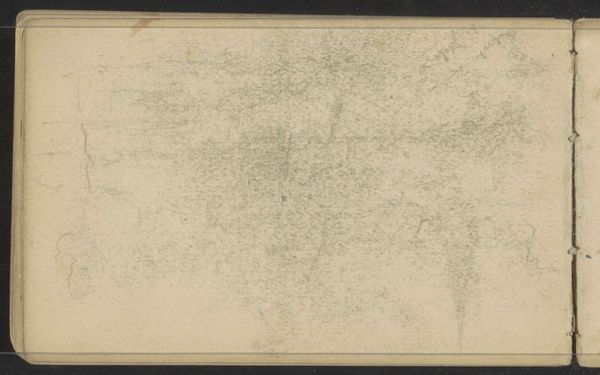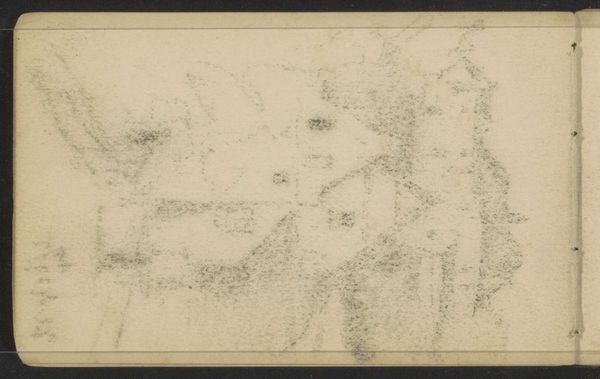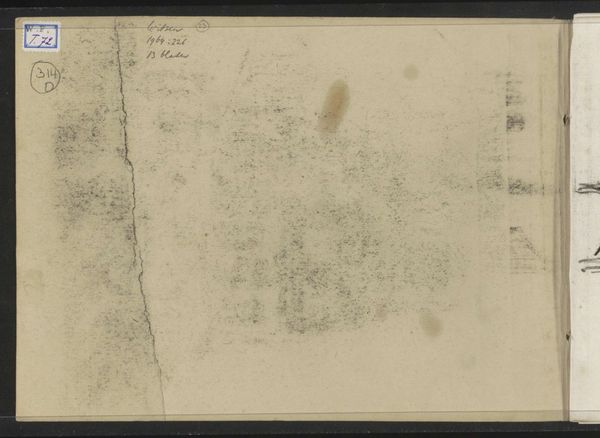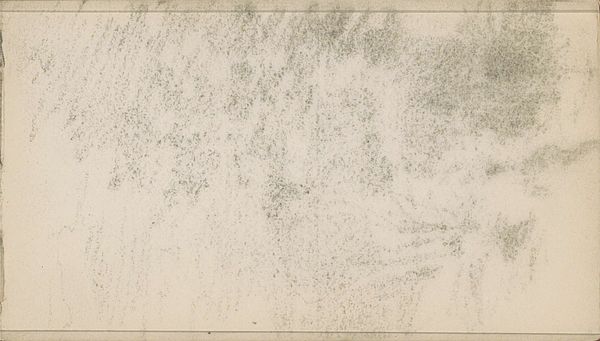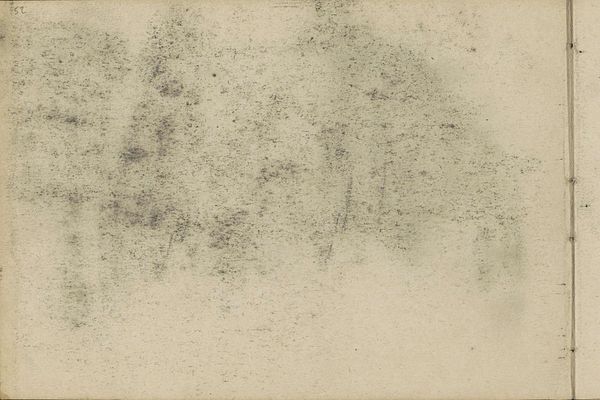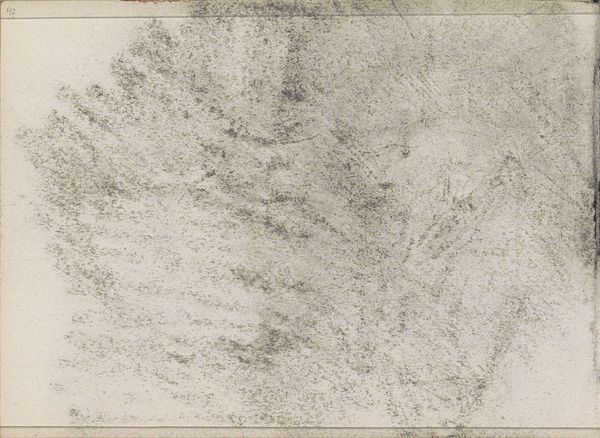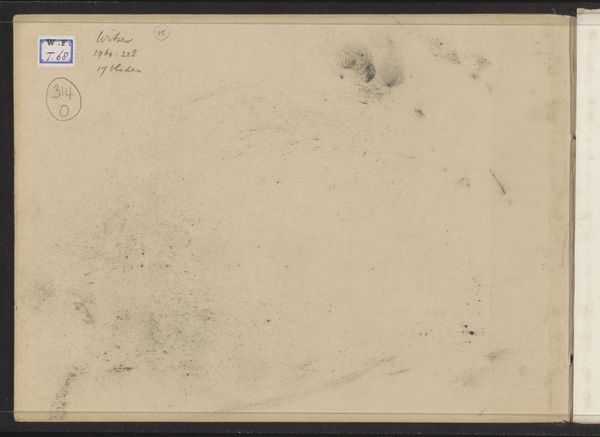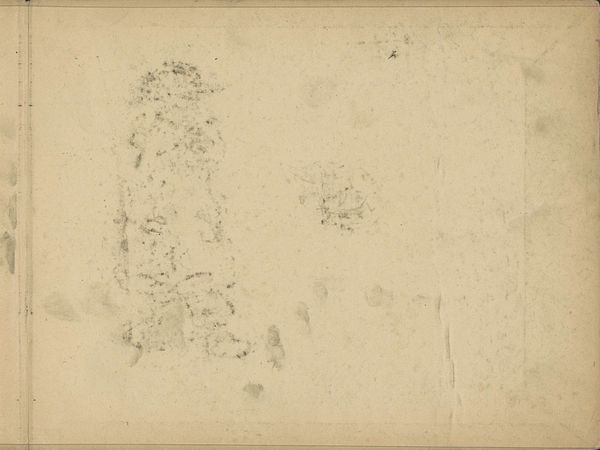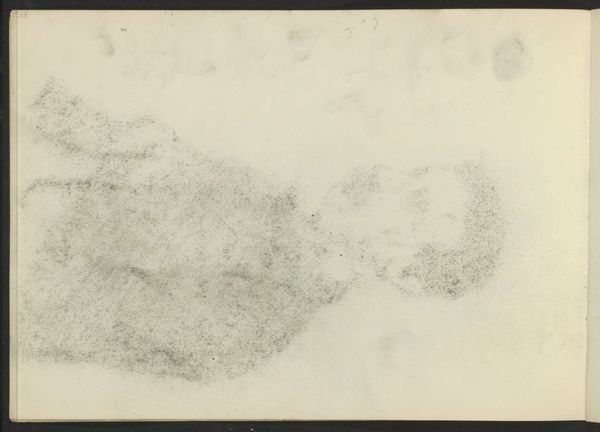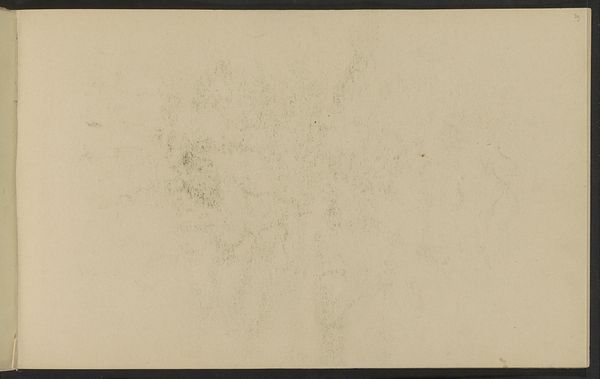
Copyright: Rijks Museum: Open Domain
Curator: Here we have "Two Faces, in Profile," a pencil drawing from Isaac Israels, likely dating between 1875 and 1934. It's part of the Rijksmuseum's collection. Editor: It’s subtle, almost spectral. The paper itself seems to have aged into the subject matter; a sort of fading glimpse. The light pencil work feels incredibly delicate. Curator: Indeed, and the age of the paper matters here. The paper itself wasn’t created to last forever; its impermanence reflects the fleeting nature of impressionism and the artistic desire to capture a quick observation of modern life. Israels clearly favored capturing that momentary essence over laborious, classically academic drawings. Editor: The profiles, they're minimalist to the extreme, aren't they? Just a few lines suggest so much; the tilt of the head, the curve of a nose. Semiotically, those simple lines evoke a fully formed individual and an emotional landscape in my mind’s eye. Curator: And Israels was keen on portraiture. Note, it's highly probable this was done in a sketchbook. If you see how faint they are, perhaps they're drawn from life, caught in a cafe perhaps. Those quick studies enabled him to better capture human expression. They reflect a growing urban culture. How might mass production, via published portraiture for instance, have transformed these images? Editor: It makes me think about the nature of capturing a likeness. This drawing doesn’t strive for photorealistic detail. It offers an essence, an impression, that resonates more powerfully because of its lack of resolution. This economy actually elevates it. Curator: You bring up the idea of economy and this speaks directly to his technique. By using less of the pencil materials, Israels captured much and saved a lot, freeing his subjects from a forced reality or any sort of status symbol. And it’s clear these two portraits are anonymous. Editor: Looking at this drawing now, I am struck at how seemingly ephemeral the figures captured here seem in tandem with the yellowed quality of the aged paper it's rendered on. It gives it a lovely visual dynamic that captures both material and meaning. Curator: The drawing encapsulates an individual’s place within the broader historical narrative—a story where the artist actively embraces immediacy and observation.
Comments
No comments
Be the first to comment and join the conversation on the ultimate creative platform.
